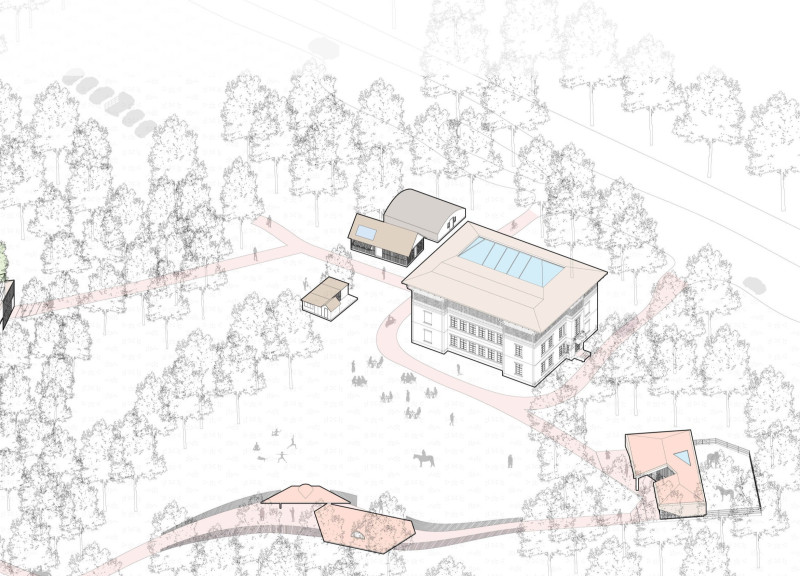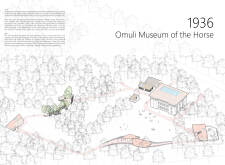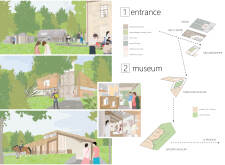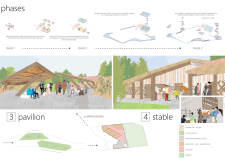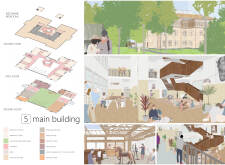5 key facts about this project
The Omuli Museum of the Horse is an architectural project that transforms a historic site into a modern cultural institution. Located in a forested area, this design focuses on celebrating the cultural significance of horses within the local community. The project aims to educate and engage visitors through diverse programming, exhibitions, and interactive spaces, providing a multifunctional environment that fosters appreciation for equestrian history.
The museum's primary function is to serve as a center for learning and cultural exchange, housing exhibit spaces, community areas, and artistic opportunities. The architecture is planned to create a seamless integration between indoor and outdoor environments, allowing visitors to experience the surrounding natural landscape while exploring the museum's offerings.
Sustainable Material Selection and Design Integration
One of the key differentiators of the Omuli Museum of the Horse is its careful selection of materials that promote sustainability and connect with the local context. Notable materials include sustainable timber for structural elements, glass for natural illumination and visual continuity, bamboo and thatch for pavilion areas, and concrete for foundational support. These materials not only enhance the aesthetic appeal but also align with the project’s ecological sensitivity and respect for regional craftsmanship.
The design also features a cohesive circulation system that guides visitors throughout the site, maximizing accessibility to each functional area. The layout emphasizes community integration, with dedicated spaces for workshops, public gatherings, and artist residencies. This focus on inclusivity and interactive experiences sets the Omuli Museum apart from conventional museum designs, promoting an educational atmosphere that encourages community participation.
Architectural Language and Space Planning
The architectural language employed in the museum consists of various forms that reflect the movement and grace associated with horses. The main building is characterized by high ceilings and open spaces that facilitate social interactions. Pavilions designed for multifaceted use provide versatile environments suited for a range of community activities, from art exhibitions to educational workshops.
Special attention is given to the entrance and information center, ensuring that visitors can easily navigate the facility and access information about ongoing programs and exhibits. The design is approached with a keen awareness of the historical context of the site, transforming the essence of the former school building while integrating modern elements.
The Omuli Museum of the Horse is a thoughtful response to the need for cultural representation and community engagement through design, showcasing an architectural approach that balances functionality, sustainability, and historical relevance. To explore the architectural plans, sections, and detailed designs, readers are invited to delve deeper into the project's presentation for an enriched understanding of its innovative concepts and architectural ideas.


